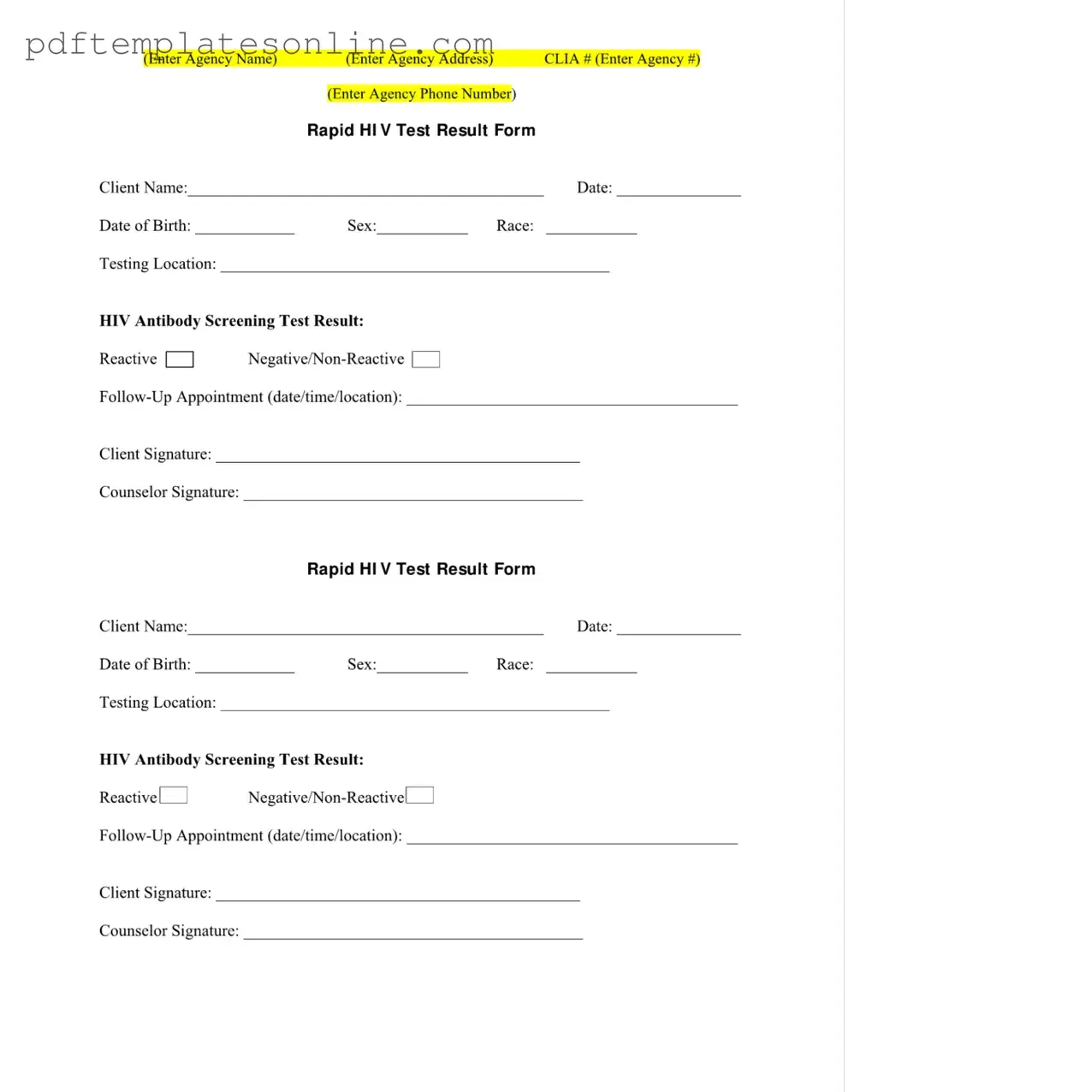Blank Negative Hiv Test Form
The Negative HIV Test form is an essential document that confirms a person's HIV antibody screening result. It includes vital information such as the client's name, date of birth, and testing location. This form serves as a record of the test outcome, which can be either reactive or negative/non-reactive, guiding further health decisions and follow-up appointments.
Access Negative Hiv Test Editor Now
